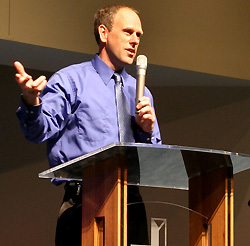
Provide Technical Training
Offer ample opportunities for your team to grow in technical knowledge.
Find a sound expert you respect and hire that person to come in two to four times a year to train your crew.
Team up with other churches to sponsor a regional conference on sound, like the HOW TO seminars.
Send for brochures and guides or reprint articles on sound for your crew.
Many manufacturers, such as Shure and Crown, provide free guides, and often, these are posted online for convenient download.
Encourage your crew to participate in focused online discussions about sound with online communities such as the Church Sound Forum here on PSW.
Lead your team by example. If you want your crew to be on time, be on time yourself. If you want others to keep the sound booth and related areas organized and clean, keep your areas organized and clean.
Encourage Relationships
To do its work well, a sound crew must work in harmony with musicians and pastors.
All too often there’s friction between sound technicians and performing artists. Some of that could be eased organizationally by including sound technicians in the church’s fine arts or music ministry.
The lead person of the technical team would report directly to the worship leader or minister of music—no one else. They would work things out, striving for communication and harmony.
Example: I saw how that could work at a recent sound seminar. A local worship leader and his worship team participated in a session I led titled “Mixing a Worship Team: A Live Demonstration.”
We purposefully had no rehearsal or sound check before the seminar. We merely tested the inputs to make sure they were working.
During the seminar, a conflict arose between the piano and keyboard players. The keyboard player wanted more of him in the monitor, and the piano player wanted less. The problem: they were sharing a monitor mix.
The worship leader let me know about the problem, and I told the players that since there were no more monitor mixes available, they should work out a solution together.
He led the players through a quick trial on the monitor until the players reached agreement. They reached harmony in less than three minutes.
Tip: The key was the worship leader’s willingness to tell me about the problem, and the opportunity I had to explain the setup limitations to the players.
I’ve discovered that when technical people are given the opportunity to explain a problem, performers are very cooperative.
